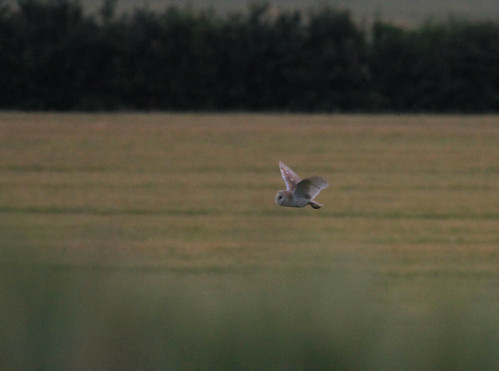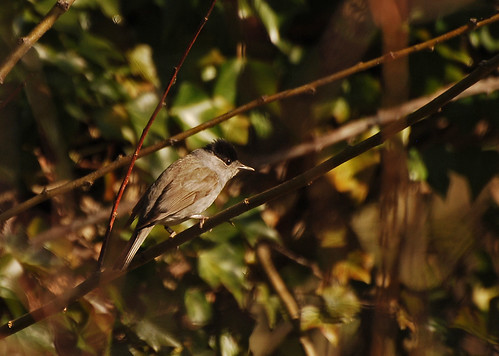As I started to write this post there was some interesting robin behaviour going on in the garden. Robins (Erithacus rubecula, Dansk: rødhals) are fiercely territorial and will kill each other to defend their patch and I often see them chasing off not just other robins but any bird smaller than a blackbird (Turdus merula, Dansk: solsort)! But just now there was a pair being relatively nice to each other and even sharing the same feeder. So I’m wondering if these two were a pair beginning to contemplate the imminent breeding season, as early as January the 12th. The weather has been much warmer than the previous three winters so maybe they are already thinking of making up for lost time.
But I began with a digression, so now to get back on message. I’ve been dithering about writing this post for a few days but I was finally inspired to start when I saw some recent posts on the blog of a good blogging friend, Gary, from ‘Krikitarts‘ (if you haven’t seen Krikarts yet make sure you check it out, it’s very, very, good!). Gary’s posts included pictures of skies and rainbows which were digitally reproduced form the original slides. And seeing these spectacular images spurred me on to get this post written to show you some evening skies from Cambridgshire in summertime.
But before I get on to the sky, on this particular evening from July 2013, green woodpeckers, which breed successfully close by, had their most recent brood of fledglings and were out and about learning how to dig up termites:
 A pair of green woodpeckers flying away from me, they’re skittish creatures (Picus viridis, Dansk: grønspætte )
A pair of green woodpeckers flying away from me, they’re skittish creatures (Picus viridis, Dansk: grønspætte )
Whilst many bird species have been on the decline, the green woodpecker seems to be thriving, at least in my part of the world. I see them around the village, in the trees and on the ground around work, and on the way to work too, and I’ve heard they are generally doing OK. They’re handsone, colourful, creatures and it’s good to see them coping well with all the insults humans throw at them.
 A greenie keeping an eye on me and the dog
A greenie keeping an eye on me and the dog
This particular evening was a very warm and sunny one and as I meandered across the fields the sun got lower and lower, and bigger and bigger, in the sky:

And as the sun got lower and plunged us into the crepuscular phase twixt day and night, a barn owl (Tyto alba, Dansk: slørugle) was quartering the fields looking for rodents. Barn owls were hit really hard by the previous three bitterly cold winters and then by the brutal wet and cold weather last spring. But we had at least two breeding pairs in Histon and this individual was half of one of those pairs. Bearing in mind the precipitous decline in barn owl numbers in the UK and beyond, I think that makes Histon an important place for them. I don’t know how many chicks were fledged but I’m hoping some survive the cold weather holds off this year and we get more breeding pairs in 2014.
Barn owls are great to watch. I know the routes they take in the fields local to here and when I see them coming I can crouch down and often, but not always, they fly slowly right over my head, around 10-15 feet up, and sometimes we eyeball each other and I wonder what they’re thnking. Of which more in another post in the near future.
And as I meandered home from watching the owl, the sun disappeared below the horizon leaving these magnificent colours hanging in the sky which slowly turned into dark blue-grey and then the black of night
Not a bad way to spend an evening!













 The cock chaffinch always adds a splash of welcome colour
The cock chaffinch always adds a splash of welcome colour My dunnock keeping one eye on the ground for seed while the other looks for the robin
My dunnock keeping one eye on the ground for seed while the other looks for the robin The coal tit waiting it’s turn to get on the seed tray
The coal tit waiting it’s turn to get on the seed tray A blue tit (Cyanistes caerulius, Dansk: blåmajse) about to join the coal tit and grab a seed
A blue tit (Cyanistes caerulius, Dansk: blåmajse) about to join the coal tit and grab a seed Starling – (Sternus vulgaris, Dansk: stær)
Starling – (Sternus vulgaris, Dansk: stær)







































